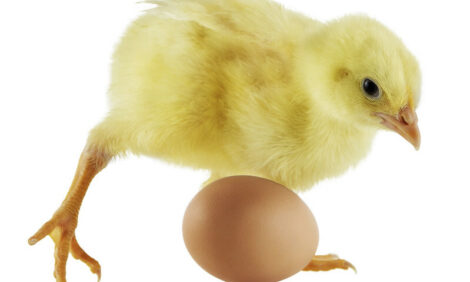



More Effort Than Ever to Go into Poultry Extension
AUSTRALIA - There are many reasons why research and grants are hard to apply for in the poultry sector, says the Poultry Cooperative Research Centre (CRC).Firstly, there’s the different perspective of farmers and researchers. Poultry farmers, whether broiler growers or layer farmers, must run profitable businesses, balancing a slew of factors including operating costs, capital costs, staff management, animal husbandry, welfare, etc. to produce an income.
Researchers, on the other hand, first form a hypothesis about an area of interest and then test the predictions that hypothesis makes to evaluate it. To undertake the work, researchers apply for funding, which is often in the form of competitive grants.
To bring farmers and researchers closer together, farmers may be introduced to science through, for instance, Nuffield Scholarships. To bring researchers closer to the needs of the poultry industry, the Poultry CRC runs its annual Ideas Exchange conference. The CRC is also investigating new ways to give researchers direct exposure to poultry production.
Secondly, there’s a gap between research findings with commercial potential and actual commercialisation of those findings, commonly called the ‘commercialisation chasm’ or the ‘valley of death’. Innovators, such as researchers and scientists are on one side, while entrepreneurs, investors, commercial managers, accountants, lawyers, patent attorneys, etc. are on the other. Again, these two groups have entirely distinct views.
The Poultry CRC, like many other Cooperative Research Centres, deals with this issue structurally. Because a CRC is a joint venture between industry and researcher organisations, often with industry as well as government funding, research findings can articulate directly out of the research organisations straight to commercialising companies.
To illustrate, Zoetis and Bioproperties Pty Ltd, which are both animal health companies, are members of the Poultry CRC. This means that, for example, when a new poultry vaccine is developed by the CRC, we don’t need to find a company willing, ready and able to commercialise it for delivery to industry.
Instead, Bioproperties and Zoetis are involved from the beginning, not only helping with the choice of which vaccines are to be developed to meet industry needs but also with the registration process required to sell new vaccines in Australia and overseas.
Thus the very structure of the CRC bridges the commercialisation chasm, ensuring that research findings with commercial potential are not wrecked at the bottom of the chasm.
Thirdly, there’s also the cost involved. For every dollar spent in research to generate a research finding with commercial potential, another hundred dollars will be needed to bring that finding to market.
Registration costs alone for a new vaccine may exceed $10 million. To ensure recovery of this level of investment, some kind of protection for the product in the market is required and, not surprisingly, that’s where intellectual property, in the form of patents, trade marks, etc. comes in.
As IP Lawyer Rob McInnes says: “What isn’t protected can’t be commercialised.”
Fourthly, the very nature of the poultry industry makes it harder to commercialise new products to it. It’s not like an app, where there’s a huge consumer market waiting to take up the next one for only $1.99.
Instead, the poultry industry has tight margins. It has a high volume, low profit per bird or egg structure. In addition, the chicken, turkey and duck meat industries are highly vertically integrated, with the egg industry becoming increasingly so.
This is why a number of products that actually work, such as nutritional supplements or litter amelioration agents, are not used by industry; the cost of adding these products does not generate a sufficient benefit to the bottom line to make it worth buying them.
Finally, a farm operates as an entire production system, which makes it difficult to implement some new research findings without threatening the system. If, for example, a new litter treatment on a broiler farm doesn’t work, it’s impracticable to move two-week old broilers to another shed while you fix the problem.
The finding must therefore be proved to at least a commercially viable pilot stage before any on-farm trials can take place. This is why the Poultry CRC places such an emphasis on research, development and extension. ‘Extension’, in this context, means taking research findings and new knowledge directly to farmers.
As the CRC enters the final years of its second term, the effort put into extension will only increase. For example, although CRC researchers have demonstrated that pathogen loads are reduced through partial composting of spent broiler litter between batches, the truly vital outcome is to provide clear guidelines to growers on how to reliably treat spent litter on their own farms.
Similarly, the CRC has partnered with Australian Egg Corporation Limited to ensure the development and extension to farmers of an industry best practice for on-farm euthanasia of spent hens.









